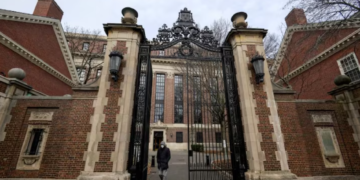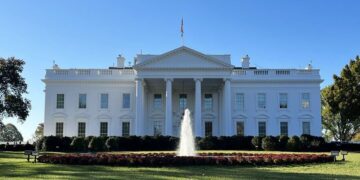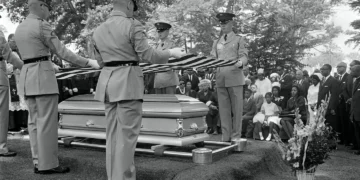Frank Wooden meticulously tends to a grave at the Lincoln Memorial Park Cemetery on Monday, Feb. 26, 2024, located in Miami’s Brownsville neighborhood. Following his brother Jessie’s acquisition of the historically segregated Black cemetery, where their mother was laid to rest, Frank assumed the role of caretaker. Together, they have undertaken extensive efforts to clean, paint, and maintain the cemetery, while continuing to provide burial services for residents. (AP Photo/Marta Lavandier)
March 15, 2024 Story by: Editor
MIAMI — Across the United States, the fate of countless segregated cemeteries, where African Americans were laid to rest over the years, has been one of neglect, abandonment, and destruction.
In recent times, heightened awareness and the discovery of graves beneath parking lots, schools, and even military bases have sparked preservation efforts among local and state governments, as well as within communities determined to restore vital ancestral connections.
In Washington, D.C., members of a historically Black sorority engaged an expert who successfully located the 1919 burial site of one of the sorority’s founders, hidden in an overgrown, neglected section of Woodlawn Cemetery.
In Miami, Jessie Wooden took on the challenge of revitalizing a historically segregated Black cemetery plagued by neglect. Motivated by the desire to restore the final resting place of his mother, Vivian, who passed away when he was an infant, Jessie, alongside his brother Frank, embarked on a mission to reclaim the cemetery from disrepair.
“When we got here it looked like a jungle,” Frank Wooden explained. “Some people had to jump the fence to get in to see their loved one.”
When sacred cultural sites like cemeteries face desecration, it compounds the pain of segregation even in death, according to Brent Leggs, executive director of the African American Cultural Heritage Action Fund.
These preservation groups and advocates have played pivotal roles in raising awareness about threats to cemetery preservation, ranging from vandalism to ownership disputes and development pressures. They offer technical expertise, legal support, and advocacy for preservation efforts.
“There’s growing awareness among the public that cemeteries are not these haunted, scary places, but they are parks to be experienced as sites of reflection and commemoration,” Leggs emphasized.
At Lincoln Memorial Park Cemetery in Miami’s Brownsville neighborhood, community members are showing their appreciation by providing support to workers engaged in cleaning and restoration efforts.
For Jessie Wooden, the journey to his mother’s grave was long overdue. Overwhelmed by an overgrown, neglected graveyard, he now finds solace in being able to pray at his mother’s resting place.
“All my life I didn’t know her. All I knew was that mom was gone,” Wooden expressed. “For me to be able to come where she’s resting at and be able to just say a little prayer and talk to her, oh, that means so much to me.” Source: AP
These efforts to reclaim and restore Black cemeteries represent a profound commitment to honor the memories of those who came before and to preserve vital connections to the past.

















